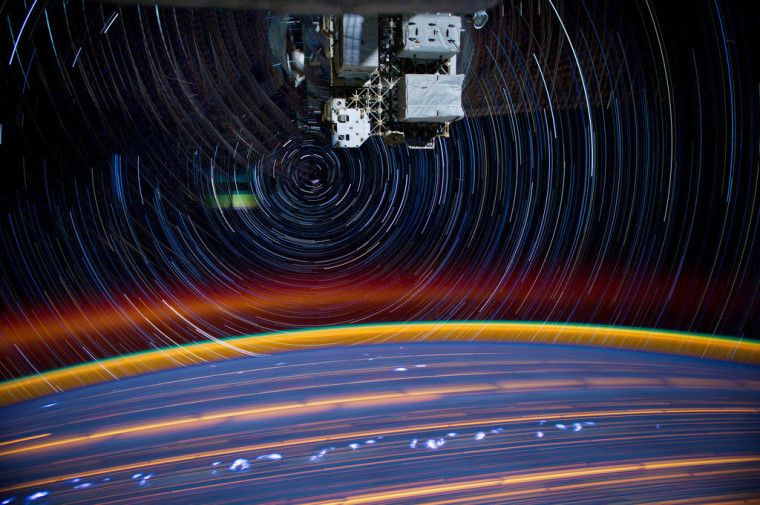Flying on the International Space Station is the world's biggest high, and a series of psychedelic time-exposure images engineered by NASA astronaut Don Pettit proves it.
This picture, showing the station's truss structure in the foreground and Earth's airglow in the background, is actually a composite of 18 different exposures. A couple of otherpictures in the series step things up a notch by putting together 47 exposures. Here's Pettit's explanation of the process, as laid out in the NASA Twitter gallery:
"My star trail images are made by taking a time exposure of about 10 to 15 minutes. However, with modern digital cameras, 30 seconds is about the longest exposure possible, due to electronic detector noise effectively snowing out the image. To achieve the longer exposures, I do what many amateur astronomers do. I take multiple 30-second exposures, then 'stack' them using imaging software, thus producing the longer exposure."
This isn't the only experiment Pettit has been conducting during his stint on the space station. A wide variety of scientific tests are under way in orbit, ranging from studies of human health in zero-G to the chemistry of Scotch whisky in weightlessness. Pettit has shown off some pretty trippy experiments in a couple of space station videos, including the creation of antibubbles within bubbles and the sight of sonic water droplets rockin' out to the sounds of ZZ Top. As Pettit says in one of the videos: "Oh, wow!" Check out the full "Science Off the Sphere" series, presented in cooperation with the American Physical Society.
More about the space station:
- Video: Russian rocket blasts off for space station
- New life science experiments sought for space station
- Space zucchini's life blogged by astronaut
Tip o' the Log to Phil Plait at the Bad Astronomy blog.
Alan Boyle is msnbc.com's science editor. Connect with the Cosmic Log community by "liking" the log's Facebook page, following @b0yle on Twitter and adding the Cosmic Log page to your Google+ presence. You can also check out "The Case for Pluto," my book about the controversial dwarf planet and the search for new worlds.
